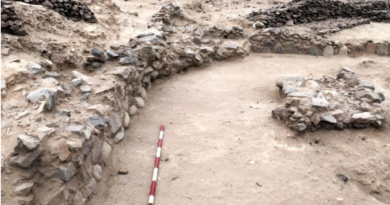New Study Reveals Por-Bazhyn in Siberia as a Manichean Monastery
A recent study conducted by the Russian Geographical Society has uncovered intriguing revelations about Por-Bazhyn, formerly shrouded in mystery, now believed to have served as a Manichean monastery. Por-Bazhyn, which translates to “Clay House” in the Tuvan language, is situated amidst the scenic Sengelen mountains in southern Siberia, Russia.
Within its confines, approximately 30 structures once stood, with the focal point being a central complex composed of two pavilions, likely dedicated to ceremonial and religious purposes. Smaller enclosure courtyards featured one or two chamber structures, adding to the enigma surrounding Por-Bazhyn’s true function.
Over the years, Por-Bazhyn has intrigued scholars due to the scarcity of archaeological evidence, resulting in various theories about its role, including speculation that it was a border fortress, a fortified palace, or even an astronomical observatory.
Historically known since the 18th century, Por-Bazhyn was first systematically explored in 1891. Radiocarbon dating and dendrochronological studies have pointed to its construction around AD 777. Previous research connected the site to the Uyghurs, drawing comparisons with the palace complex of Karabalgasun, the capital of the Uyghur Khaganate.
Chinese influence on Por-Bazhyn’s design has also been posited, especially in the layout of the central complex, reminiscent of the Tang style. This theory gained further credence from the use of Chinese construction techniques like the hangtu method and dougong ceilings, as well as the presence of Chinese-style building materials.
The recent announcement by the Russian Geographical Society asserts that Por-Bazhyn was established as a Manichean monastery dedicated to the study of Manichaeism. This ancient world religion, founded by the Parthian prophet Mani (AD 216–274) in the 3rd century AD, found favor with the Uighur Empire in the AD 770s under the rule of Bögü Khagan.
However, this religious transformation was cut short in AD 779 by a counter-Manichean uprising. As a consequence, Por-Bazhyn was abandoned following the demise of Bögü Khagan. Andrei Panin, deputy director of the Institute of Geography of the Russian Academy of Sciences, explained, “If the monastery was built on the eve of the coup, then the previous rulers simply did not have time to use it, and for the new one, it was no longer needed.”




